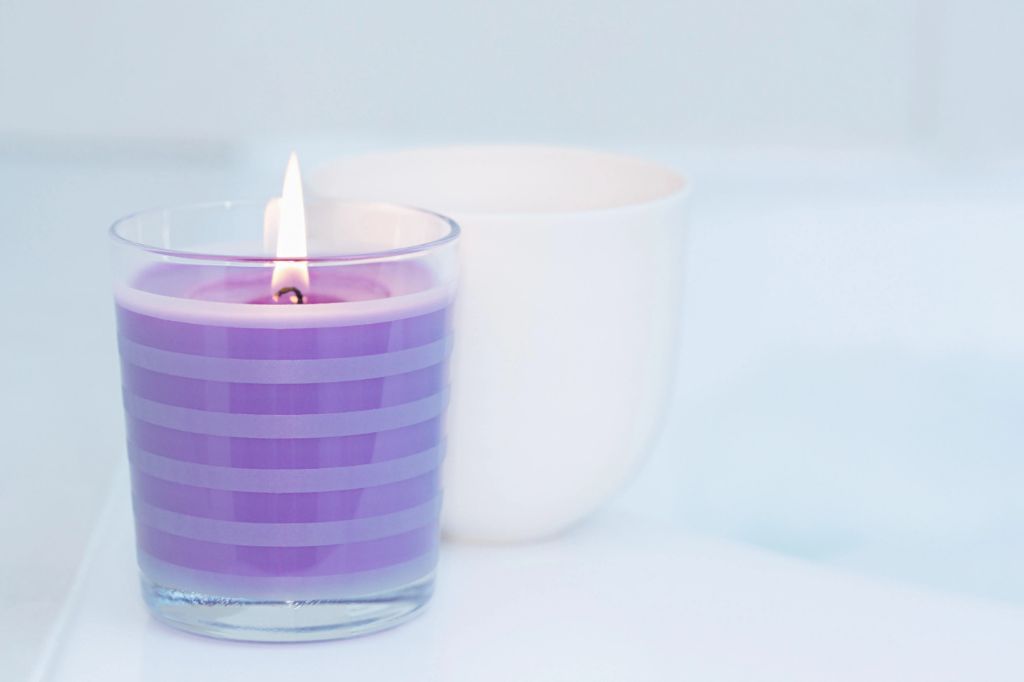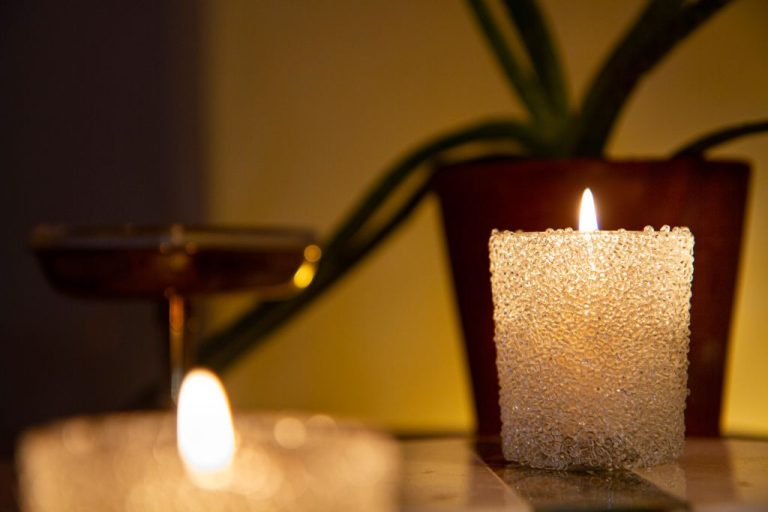What Candles Are Safe For Asthma?
Asthma is a chronic lung disease that inflames and narrows the airways, making breathing difficult. Scented products like candles contain chemicals and particles that can trigger asthma symptoms or asthma attacks. When inhaled, these irritants cause the airways to swell, fill with mucus, and become obstructed, resulting in coughing, wheezing, chest tightness, and difficulty breathing. For people with asthma, it is important to avoid triggers like scented candles that can cause airway inflammation and worsen their condition. This article provides guidance on identifying candle ingredients that are unsafe for asthma, as well as tips on choosing alternative, asthma-friendly candle options.
Dangers of Candles for Asthma
Candle smoke contains tiny particles and chemicals that can trigger asthma symptoms and exacerbate breathing difficulties for those with the condition. When lit, the candle wick emits soot particles as it burns along with volatile organic compounds (VOCs) released from fragrance oils and paraffin wax (1). These irritants can inflame the airways and lungs, leading to coughing, wheezing, chest tightness, and shortness of breath in asthmatics.
Artificial scents and fragrances added to candles often contain phthalates, which are chemicals known to aggravate asthma and allergies. Studies show phthalates from scented candles can enter the lungs and bloodstream, where they interfere with hormone function and provoke inflammation (2). Even unscented candles produce smoke and VOCs that can bother sensitive airways.
According to experts, burning candles frequently indoors traps these asthma triggers inside the home. The American Lung Association advises those with asthma or allergies to avoid burning scented candles as their fragrances can linger in the air for hours after being extinguished (3). The smoke and residual chemicals from candles pose a high risk for triggering asthma flare-ups and attacks.
Candle Ingredients to Avoid
Certain ingredients commonly found in candles can trigger asthma symptoms or make them worse. The main problematic ingredients to be aware of include:
Paraffin Wax – Most conventional candles are made from paraffin wax derived from petroleum. When burned, paraffin candles release compounds called volatile organic compounds (VOCs) that can irritate airways and worsen asthma (1).
Fragrance Oils – Artificial fragrances added to candles also contain VOCs that act as asthma triggers. Studies show scented candle usage is associated with increased asthma symptoms (2).
Essential Oils – While natural, essential oils also contain volatile compounds. Their strong scents can inflame airways when burned in candles (3).
Smoke – The smoke emitted from a burning candle wick contains fine particulate matter, which is an asthma trigger. Those sensitive to smoke should avoid any type of burning candle (4).

The safest approach for people with asthma is to avoid candles made with paraffin wax, artificial fragrances, and essential oils. Opting for unscented, vegetable-based candles with cotton wicks reduces exposure to irritating compounds.
Candle Ingredients that are Safer
When choosing candles for asthma or allergies, some ingredients tend to be safer and cleaner burning than others. Some of the most recommended ingredients include:
Beeswax
Beeswax candles are often considered one of the safest options for asthma and allergies. Beeswax is a natural wax produced by honey bees that contains no toxins or chemicals. According to Simply N Delight, the clean burn of purified beeswax makes it a great option for anyone suffering from allergies or asthma.
Soy Wax
Soy wax is another common alternative to paraffin that is often recommended for asthma and allergy sufferers. Soy wax comes from soybeans and is free of toxins. According to Asthma Allergy Doctors, soy candles burn cleaner than standard paraffin candles.
Natural Vegetable Oils
Some candle manufacturers use natural oils like coconut, palm, or vegetable oil instead of paraffin. These natural oils also burn cleaner than petroleum-based ingredients. When purchasing, look for candles made from 100% natural oils, rather than a blend with paraffin.
Wick Types
The type of wick used in a candle can greatly impact asthma symptoms. Cotton wicks are typically the safest option. Cotton burns cleanly without releasing harmful chemicals or excess smoke and soot.
Wooden wicks, while natural, can aggravate asthma. As they burn, wooden wicks crackle and pop, emitting sparks and small particles into the air. These can trigger coughing and wheezing in those with asthma or allergies.
Metal-core wicks are another type to avoid with asthma. The metal allows the wick to bend as needed when burning, but it also catalyzes chemical reactions that produce more soot. This fills the air with tiny particles that can inflame airways.
One study found scented candle use exacerbated asthma symptoms, likely due to chemical emissions from wicks and wax. The researchers recommended choosing cotton wicks when possible as a safer option. (https://www.ncbi.nlm.nih.gov/pmc/articles/PMC9832800/)
Overall, plain cotton wicks are the best candle wick material for those with asthma. They burn cleanest and release the fewest irritating particles into the air compared to wood, metal, or other wick types.
Candle Alternatives
There are several safer alternatives to traditional candles for people with asthma. Two popular options are wax melts and essential oil diffusers.
Wax melts contain scented wax cubes that are warmed in a low-heat wax warmer, slowly releasing fragrance into the air. The wax doesn’t have a wick and doesn’t produce smoke when melting, making it gentler for people with respiratory sensitivities. Popular wax melt brands like Scentsy and Yankee Candle offer a wide variety of fragrances to choose from.
Essential oil diffusers are another asthma-friendly alternative to candles. They disperse essential oils into the air to provide aromatic benefits without smoke or soot. Ultrasonic, nebulizing, and evaporative diffusers all avoid open flames. Some also come with lighting effects to mimic the ambiance of candles. Using 100% pure essential oils and cleaning diffusers regularly is important for safety.
Battery-operated flameless candles can also replicate the visual effect of traditional candles without smoke. These flameless candles use LED bulbs to simulate a realistic flickering flame without triggering asthma symptoms. They come in many styles, from votives to pillars, and offer a soothing ambiance.
Tips for Burning Candles Safely
Proper ventilation is key for burning candles safely if you have asthma. Open windows, use fans, or run air purifiers to ensure fresh air circulation. This helps remove smoke and particulates that can trigger asthma symptoms (Sundblad, 2018).
Also trim candle wicks to 1⁄4 inch before lighting to prevent excess smoke production. Long wicks create more soot and release more scent chemicals into the air (Homesick, 2021).
Only burn candles sparingly – 1-2 hours at a time. Overexposure to candle fumes can irritate lungs even in mild asthmatics (Sciencedaily, 2023).
Top Recommended Candles
Based on research, some of the top candle brands that are recommended for people with asthma include:
Paddywax Eco Candles – These candles are made from soy wax, paper wicks, and essential oils. The soy wax burns cleanly without releasing asthma triggers.
Bee’s Wrap Beeswax Candles – Made purely from beeswax, these candles have natural scents and do not contain synthetic fragrances, making them a good option for people with asthma.
Mrs. Meyer’s Clean Day Soy Candles – These soy candles use natural essential oil scents and cotton wicks. Mrs. Meyer’s products are hypoallergenic and do not contain artificial scents.
Yankee Candle Housewarmer Jar Candles – The Housewarmer line from Yankee Candle uses an all-natural wax blend designed to burn cleaner than paraffin. They help reduce asthma triggers.
Gold Canyon EcoSoy Soy Wax Candles – Gold Canyon candles use 100% soy wax and premium fragrances. The soy wax has a low melting point so it doesn’t produce smoke.
Other Asthma Triggers
In addition to scented candles, there are many other potential triggers that can exacerbate asthma symptoms. According to the CDC, the most common asthma triggers include:
- Viral infections like colds or flu (https://www.cdc.gov/asthma/triggers.html)
- Allergens from pets, dust mites, mold, and pollen (https://aafa.org/asthma/asthma-triggers-causes/)
- Air pollution and smoke from tobacco products or wood burning
- Strong emotions and stress
- Exercise
- Certain medications like aspirin or NSAIDs
- Changes in weather and exposure to cold, dry air
It’s important for those with asthma to identify and avoid their personal triggers as much as possible. This can help reduce the frequency and severity of asthma attacks. Controlling home and indoor environments is especially important.
Conclusion
In summary, there are certain candle ingredients that should be avoided by those with asthma, like paraffin wax and artificial fragrances. Opting for candles made from beeswax, soy wax, or vegetable wax can help reduce asthma irritation. Stay away from candles with synthentic dyes and fragrances. When possible, choose candles with cotton wicks instead of lead or zinc core wicks, as these produce less soot.
If you do burn regular candles, make sure the room is well-ventilated and the candle is in a container rather than sitting directly on a surface. Trim wicks to 1⁄4 inch before lighting to lower smoke. Extinguish candles when leaving a room or before going to sleep. Battery-operated flameless candles are also a safer option.
Always check the ingredients list before buying candles if you have asthma. Seek out clean-burning, fragrance-free, and dye-free options made from natural waxes. With some caution, those with asthma can enjoy candles in their home safely.



